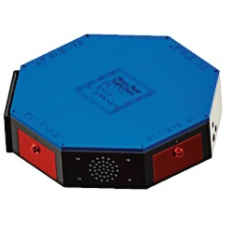It is said that necessity is the mother of invention, and three 17-yearold students proved that by inventing a game for visually impaired people. Yashovardhan Kothari, Dev Kapashi and Dhruv Jhaveri planned this two years ago when they were in the 10th standard, but the game for the visually disabled took years to see the light of the day.
Once while playing a game together, they noticed that one of their friends, who is visually challenged, couldn’t play some games or had difficulty playing them. From there, their passion for games found a new direction. The three of them decided to build a game that even visually challenged children and individuals could play easily, which would be easy to use and be pocket-friendly as well.
Dhruv’s brother, Moksha, is visually challenged. They found that he was finding it difficult to play with them. Therefore, they came up with the idea of making a game that he could play and enjoy too. Upon further investigation, they came to know that such games are not available for visually challenged children in India. They are of foreign brands and not very easy to use. They are complex. Moksha had some games like that. But what if they built a game for those who do not have a game, they thought. This question set them off on a new journey and the seed of this great invention was sown.

Yashovardhan says, “We decided to build a game that could be easily played by the visually challenged, be portable, user-friendly and reasonably priced. The main thing is that it will be interesting. It will increase the interaction of society with them, and they will also be able to play with everyone and not feel isolated.” Speaking about the process, he says, “Then we played a lot of games. I also looked at their operating systems and decided that there should be a game that can be played ‘physically’, sans multiple buttons and complicated mechanism. Then we decided to make an electronic-based computer game. Its general structure is like the quiz-based game Kaun Banega Crorepati. It is interactive. We created this general knowledge-based game using Python, a programming language.”
Dev Kapashi adds, “We had decided to work on three things. One is size, the other is price and the third is simplicity! We decided to create a very interesting game without too many buttons or too many notifications.”
These teenagers then watched many games, held discussions with visually challenged children, went to their schools and understood what problems they face while playing games. Then one by one they started designing the game. Work began on building a table-sized electronicallyrun game. For at least a year-and-a-half, these teenagers worked on this game as if possessed. All this time they remained busy building the game, its database, coding it, and running trials and re-trials to make it sound and fail-safe. And after this gruelling hard work and dedication, their game took shape.
They named it ‘Vision Beyond’.
When asked how they managed this while keeping up with their regular studies, Yashovardhan says, “It is one thing to come up with an idea, but translating that idea into reality is not an easy task. The three of us were obsessed with the idea of building this game. It was an obsession. We wanted to make a product of our imagination. That task was not easy. Sketching, learning a coding language, creating 3D modules, importing voice, constant trial and error were all challenging. Often the idea seems simple, but actually realising it is a very interesting and challenging journey. It was so for us too.”
Dev says, “During this time we brainstormed a lot, read a lot, talked to each other about our ideas. We also studied market surveys, what people want, what is available in the market today, what is not, and what is needed. I brainstormed on it again and again. And at the same time, we enjoyed the work and understood the challenge anew!”
All three friends are now working hard to make the game available to their visually challenged friends.












